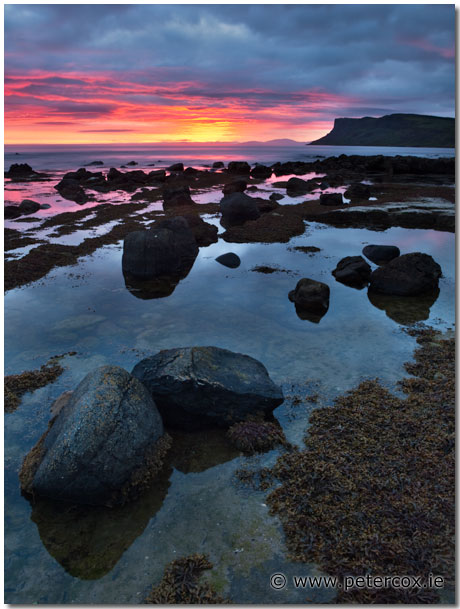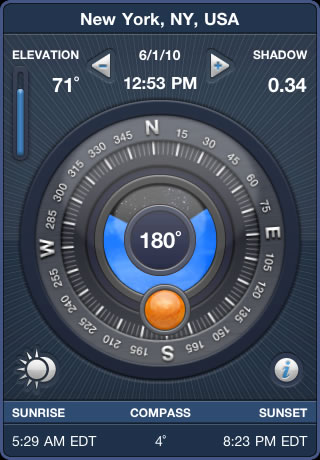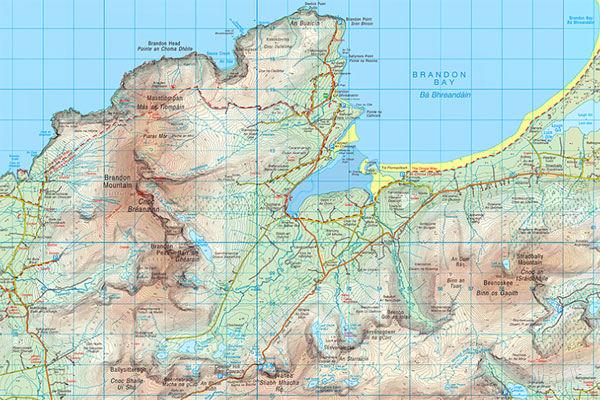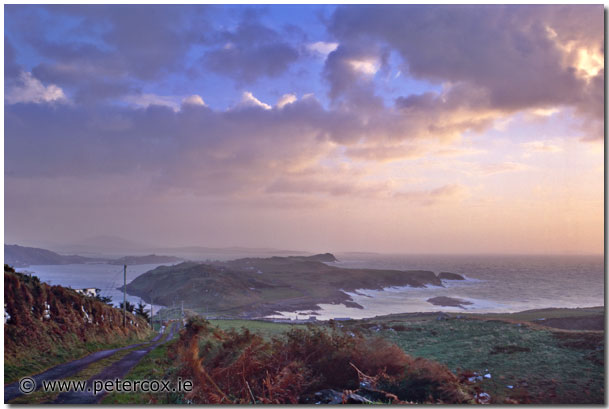
A frequently asked question I get is whether or not my images are the result of planning, and if so, how I go about it. The answer is that my photographs are a mixture of planned and found shots – but very often the found images come out of a planned excursion. In this article, I’ll share some of the planning techniques and tools that I use to increase my chances of success.
Previsualization and Revisiting
There are two ways I go about deciding where to go on a photography trip. This applies both to morning and evening jaunts as well as to longer, multi-day outings.
The first is if I’ve been in a location already. If so, I’ll have scouted out one or more possible compositions and have a pretty accurate picture in my mind of what the scene looks like. If the light isn’t right then and there, I’ll think about when might be the ideal time (both of day and year) and make a mental note to revisit it under those conditions.
At any given time, I’ll have a catalogue of these sorts of places in my head and if I’m in the area and planning a shoot, I’ll pick one that I think has the best chance of success. Some people use a notebook or a pocket computer, but I prefer to keep a mental list.
The second situation is where I’ve never been to a location before. In that event, I rely heavily on topographical maps to try and suss out potential locations before going. Usually this sort of planning is in advance of a longer trip, so I’ll have time to scout locations for morning and evening shoots during the middle of the day (typically a dead time for landscape photography). Those are the two basic ways of planning a shoot. Now let’s talk about the variables that will affect the light – which is the next most important factor after composition.
The Sun
For most photographs, the Sun is the critical variable that affects the look and feel of the composition. In fact, often it’s the driving factor. We all know that the Sun rises in the east and sets in the west. But did you also know that it travels north to south throughout the year? In the winter months, the Earth’s axis is tilted away from the Sun and it rises and sets to the southeast and southwest. Conversely, in the summer months, the Earth’s axis tilts towards to Sun and so it rises and sets to the northeast and northwest. This means that on any given day, the Sun will rise and set a slightly different point at your location. This plays a huge role in determining how a scene will look at different times of the year. The classic examples of this in Ireland are the north and south coasts. During the winter on the north coast, the Sun will rise behind cliffs and mountains, thereby leaving many coastal locations in shadow – some for the entire day. Only during the summer months does it travel far enough to the north to be visible while rising or setting.
When it comes to illumination in photographs, it’s all about the direction and angle of lighting. Early morning and late evening are best as the low angle casts long shadows and reveals real texture in the landscape. The direction we want depends largely on the scene itself.

Dunluce Castle, Co. Antrim
The scene above was a result of a scouting trip. I arrived at the location well after sunrise with the intention of establishing a composition and figuring out a time when I would return. I did all that, and then took a photograph anyway – even though it was getting close to mid-day. The image worked well enough that I have it on the site, but it’s not what I plan to get from this scene when I have the opportunity to return in ‘ideal’ conditions.
I post it here because it’s an example of planning the angle of light. There are two times to photograph this castle with great light – either sunrise or sunset. The cove I’m standing in faces north, and the image here is made with me facing west. Obviously, summer is the time to shoot this scene (as the coastline faces north). A sunset shoot would have the photograph taken into the Sun, which would have the castle in shadow and create a ridiculously high contrast – one which would be difficult or impossible to photograph well.
On the other hand, a dawn shoot would have the Sun over and behind my right shoulder, illuminating the castle with lovely warm, low-angled light. This would be my preferred shot – contrast would be manageable and aesthetically I think it would be stronger. Of course, I didn’t get those conditions on the trip in question, but I know exactly what I’m looking for next time. What I did get on the morning I had earmarked for Dunluce was a sunrise where the light was struggling to penetrate a fairly heavy overcast. Having looked at the forecast the night before and figuring it would be touch and go for early morning sunlight on Dunluce, I had a backup plan – a location where I could shoot into the rising Sun and catch the fiery colours as it tried to make its way through the clouds. That resulted in the image below. You can see that despite the riotous colours on the horizon, the stones in the foreground are not getting any of it – and this was the height of the display. Dunluce would have been very disappointing that morning. But because I thought ahead and was ready for the contingency that it might be overcast, I went with plan B and came away with an image I’m very happy with.

Colliery Bay & Fair Head, Co. Antrim
“Where’s the Sun?!”
It’s all well and good to talk about Sun position in generalities, but how do you know where it’s going to be in relation to a composition on any given day? Thankfully, nowadays that information is readily available, either on your computer or in the palm of your hand. There are plenty of free applications and websites that will tell you sunrise/sunset data, but the best solution I’ve found is an iPhone withFocalwareinstalled.

Focalware Main Screen
I don’t generally plug products so directly, but this application is definitely best-of-breed. It uses the iPhone’s built-in GPS to get your exact location and gives you sunrise/sunset and moonrise/moonset information for that spot, either for the current day, or any other time in the future. Importantly, as well as giving you the time for the major events, it also gives you their direction. It even ties into the phone’s compass so you can see exactly where the event will happen from where you’re standing.
Needless to say, I find this a vital aid, both when standing in a location (as with the Dunluce scouting trip) and when examining a potential location on the map.
I’ve just come across an excellent desktop application that does the same thing, but includes vectors to sunset, sunrise, moonset and moonrise from your location in Google Maps:The Photographers Ephemeris. Highly recommended, and aniPhone appis available as well.
Map Reading
I’ve mentioned using maps to help find locations a couple of times – here’s a brief overview of how I do it.

Dingle Map Excerpt
Maps are tremendously useful for figuring out which locations might be worth a scouting visit. In Ireland, I find the Ordinance Survey Discovery Series maps to be indispensable. The excerpt above is from that series, and you can see why I like them – the topography is very clearly readable.
Looking at the excerpt, you can see that Brandon Mountain’s ‘sculpted’ side faces east (this is the ridge running north-south on the left side of the map). This means the best photographs of the mountain would be taken at dawn with the Sun’s rays illuminating the cliffs and corries. However, there’s a range of mountains to the southeast, which might affect the Sun on a winter’s morning (as it would be rising in the southeast, and therefore might be blocked during the crucial first few minutes). So the best unobstructed light would come on a morning in midsummer, when the Sun is at or near its northernmost point.
Having established that, I’ll mark a few potential viewpoints on the map, paying attention to the locations of forestry, road access, rivers & waterfalls, and even megalithic tombs which may provide interesting foreground material. These will get earmarked for visiting during the day so I can more thoroughly plan where the best compositions are, and which locations live up to my expectations.
Planned vs. “Found” Images
There’s an old adage in military circles: “No battle plan survives first contact with the enemy.”
This may seem an odd thing to quote in an article on landscape photography, but I think it’s very pertinent. What the quote is telling us is that in order to succeed, you have to be willing to think on your feet and adapt if (and when) things don’t go according to plan.
Most importantly to photography, this means that when you’re planning on getting a certain image, if conditions don’t turn out the way you want, don’t throw in the towel. Look around to see if there’s something else you can do – you may be surprised and walk away with an image even better than the one you thought you’d get.

Crookhaven Peninsula, Mizen, Co. Cork
The image above is an example of just such a situation. On my first photographic trip to Cork some years ago, I planned to get up for the dawn, drive an hour from my B&B to Brow Head and photograph the islands and the Fastnet lighthouse.
I arrived in the pre-dawn gloom, drove the car up the road you see in the photograph to the top of the hill and walked up to the ruined signal tower. I spent the next half an hour or so photographing to the south and west, not really happy with anything I was getting – it wasn’t working the way I’d visualized it.
In the end, after the Sun came up, a squall passed over and thoroughly soaked me – I just managed to keep the camera dry by turning my back to the wind and stuffing it in my jacket. Feeling somewhat dejected, I turned away and walked (or should I say ‘trudged’) back to the car.
As I was driving back down the hill, this view opened up in front of me and I knew the trip had been more than worthwhile. The squall which had soaked me was now in the distance and provided a medium for the rising Sun’s rays to catch, resulting in these fantastic subtle colours.
In this particular case, you’d have to be blind not to see the potential in the alternate scene. In most cases, the alternates are not quite so obvious -the point is you must remain alert to the possibilities and leave your mind open to other thans besides what you came to photograph initially. A Plan B comes in handy, too!
February, 2011
About The Author
Peter Cox is a landscape photographer and educator living in the beautiful south-west of Ireland. He leads regular photography workshops in that area, bringing participants to the best locations, from unknown nooks and crannies to the well-known vistas. For more of his work, you can visit his website at: http://www.petercox.ie/
You May Also Enjoy...
Sony Duo 11 Review
A Review of the Sony Duo 11 by Miles Hecker Background The advent of digital photography brought with it the replacement of the traditional wet
On the Road to Hummingbird Heaven
I say everybody wants to laughBut nobody wants to cryEverybody wants to go to heavenBut nobody wants to die ~Albert King For thousands of years,
